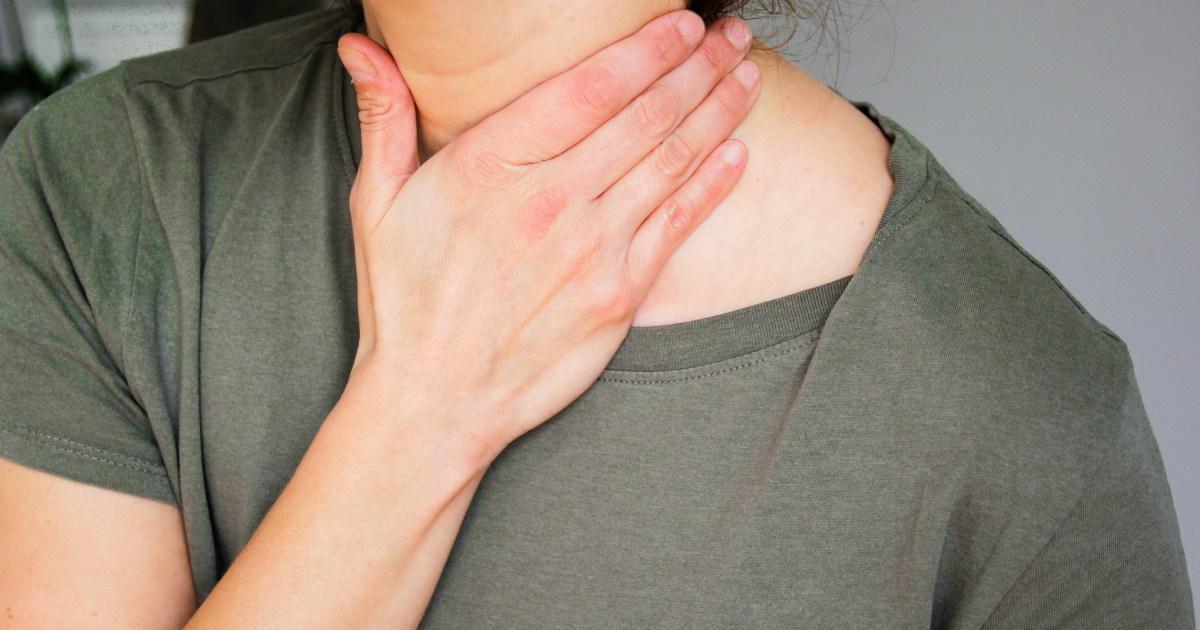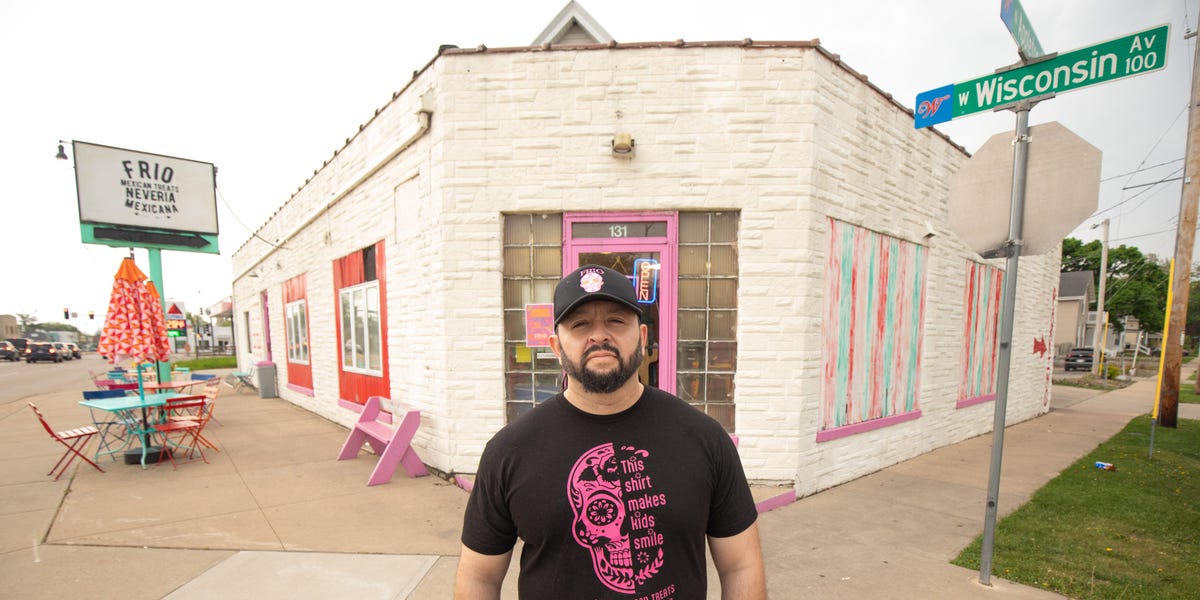
The first time I saw someone being strangled on TV was in EastEnders.
I was 16 in 2005, when gangster Johnny Allen (Billy Murray) held Sharon Watts (Letitia Dean) against the wall by her throat, yelling threats into her face before she revealed she was pregnant.
The scene did not really stick out to me back then, nor did I find it shocking or moving. But therein lies the problem.
To me, it seemed like Sharon walked away with no shock afterwards, confusion, trauma, or flashbacks. It was something that just happened – a small piece in a bigger storyline.
Two decades later, the same thing happened when Keanu Taylor (Danny Walters) strangled Sharon until Linda Carter (Kellie Bright) stopped him before it was too late.
But the thing is, strangulation is rarely broken down and seen for what it actually is.

I’m the Communications Manager of the Institute for Addressing Strangulation (IFAS) and I want you to really picture it. The person you trust most in the world has their hands around your throat, restricting your breathing and is looking directly into your eyes as they do this.
Fear is running through you, and you believe with every fibre of your being that you will die. These are your last moments. Only they are not.
You survive. But this moment is lodged into your memory forever. This is what it means to be a victim-survivor of strangulation.
So why can’t popular culture reflect this accurately? The best we can seem to muster is that it’s a harmless sexual act, which is not only alarmingly inaccurate but also minimises the health risks.
This Is Not Right

On November 25, 2024 Metro launched This Is Not Right, a year-long campaign to address the relentless epidemic of violence against women.
With the help of our partners at Women’s Aid, This Is Not Right aims to shine a light on the sheer scale of this national emergency.
You can find more articles here, and if you want to share your story with us, you can send us an email at vaw@metro.co.uk.
Read more:

Films such as Lady Chatterley’s Lover, Obsession, and 365 Days all feature strangulation as a normal part of sexual experiences. But watching these scenes, you would never know how easily the act of strangulation can cause harm.
Then there’s strangulation as a purely violent act, as seen in the TV series, Mr Bigstuff, where Danny Dyer’s character is strangling someone using a hammer handle.
But what sits between these extremes is much more complex, widespread, and dangerous. Strangulation often occurs as part of domestic abuse or sexual violence, often perpetrated by someone you know or maybe even love and trust.
It is the ultimate control you can exert on another human being. By applying pressure to the neck – a vulnerable area – and restricting someone’s breath, you are showing you have final say over whether they live or die.

That’s why I want to see more scenes in popular culture of strangulation that take it seriously in domestic abuse contexts. Because the stats are truly sobering.
Research has shown that a person can lose consciousness in around seven to 10 seconds of being strangled, damaging blood vessels in the neck, leading to blood clots forming, which may result in a stroke. In fact, evidence suggests it’s the second most common cause of stroke in young women.
IFAS analysed data from Domestic Homicide Reviews, which showed that prior controlling behaviours were present in two third of cases where the victim was fatally strangled. Over half of those who were fatally strangled had experienced non-fatal strangulation prior to their death.
On top of that, of the 2,000 women aged 14 years and above who were killed in the UK since 2014, strangulation was used in 550 killings; 372 of those women killed were strangled by an intimate partner.
Learn more about domestic abuse in the UK
- One in 4 women will experience domestic abuse at some point in their lives
- ONS research revealed that, in 2023, the police recorded a domestic abuse offence approximately every 40 seconds
- Yet Crime Survey for England & Wales data for the year ending March 2023 found only 18.9% of women who experienced partner abuse in the last 12 months reported the abuse to the police
- According to Refuge, 84% of victims in domestic abuse cases are female, with 93% of defendants being male
- Safe Lives reports that disabled women are twice as likely to experience domestic abuse as non-disabled women, and typically experience domestic abuse for a longer period of time before accessing support
- Refuge has also found that, on average, it takes seven attempts before a woman is able to leave for good.
Shockingly, there were a total of 23,817 offences of strangulation and suffocation recorded in England and Wales in the first year of strangulation and suffocation becoming a stand-alone offence.
Given how widespread strangulation is, media reporting on these cases is seriously lacking.
To tackle this, organisations like End Violence Against Women (EVAW) – a UK-based organisation that campaigns to end all forms of violence against women – offers guidelines on how to report on this subject matter, which emphasise the importance of prioritising the voice of the victim or survivor.
Their voices can help educate the public about the risks around strangulation and provide much needed context to the one-dimensional strangulation scenes we are often exposed to in film and TV.
Overall, British soaps have done well to increase understanding of violence against women and girls. This is especially so around coercive control, like during Mo and Trevor’s domestic abuse storyline in 2001.
Through physical, emotional, and sexual abuse, Trevor terrorised Mo. This was in the form of coercive control by not letting her see family and friends, rape, and violent acts of aggression like pulling her hair or making her eat Christmas dinner off the floor.
For British audiences at the time, it helped people to recognise signs of abuse in their own relationship and access support. In fact, one domestic abuse organisation stated that it was ‘ground-breaking’ and the most significant TV portrayal of violence in the home in 30 years.

Since then, domestic abuse has thankfully been covered much more widely in TV and film, like coercive control in the film Alice, Darling, honour-based violence in ITV’s Honour, and stalking in Netflix’s Baby Reindeer.
But more needs to be done to ensure strangulation is depicted realistically. Watching scenes play out on the big screen, I wonder how many of these producers, directors, or even actors have actually spoken to anyone who has experienced strangulation.
The irony is that many of the scenes of late showing strangulation would likely have required intimacy coordinators on sets – and rightly so – to protect the actors’ wellbeing through creating a safe, consensual, and respectful environment.
But what about the audience watching strangulation scenes? Don’t we need to be protected from misinformation, misrepresentation, and minimisation of what strangulation actually is and the harm it causes?
TV and film have the power to help raise awareness of the risks around strangulation and move conversations forward.
But this starts with speaking to those who have lived experience. Only through these dialogues can we create complex, nuanced, and moving depictions of strangulation.
Do you have a story you’d like to share? Get in touch by emailing jess.austin@metro.co.uk.
Share your views in the comments below.
MORE: My boyfriend poked my back with his penis – his seduction technique needed work
MORE: We’re living in the Handmaid’s Tale – Adriana Smith proves it’s true
MORE: Man jailed for at least 29 years for stabbing Cher Maximen to death at Notting Hill Carnival










